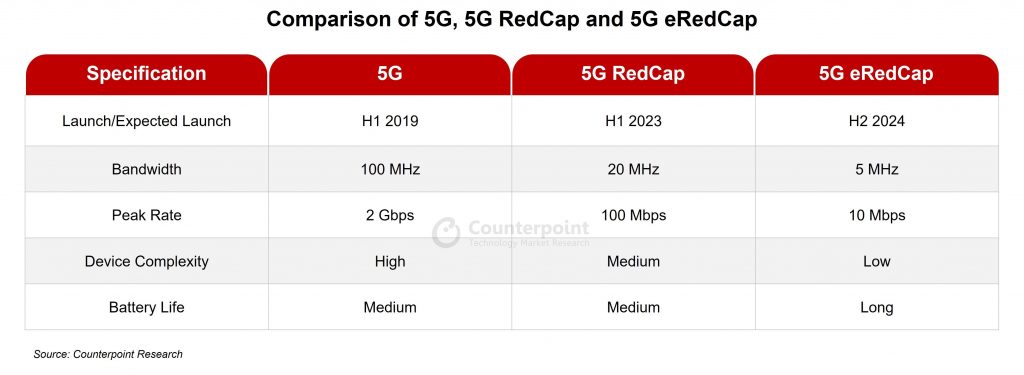- Home
- Braemac Blog
- Could 5G RedCap Usher in a New Era of Connectivity?
Could 5G RedCap Usher in a New Era of Connectivity?
About Symmetry Electronics
Established in 1998, Symmetry Electronics, a Division of Braemac, is a global distributor of electronic components and systems. Combining premier components and comprehensive value-added services with an expert in-house engineering team, Symmetry supports engineers in the design, development, and deployment of a broad range of connected technologies.
Exponential Technology Group Member
Acquired by Berkshire Hathaway company TTI, Inc. in 2017, Symmetry Electronics is a proud Exponential Technology Group (XTG) member. A collection of specialty semiconductor distributors and engineering design firms, XTG stands alongside industry leaders TTI Inc., Mouser Electronics, and Sager Electronics. Together, we provide a united global supply chain solution with the shared mission of simplifying engineering, offering affordable technologies, and assisting engineers in accelerating time to market. For more information about XTG, visit www.xponentialgroup.com.

As we increasingly rely on interconnection, the demand for efficient and scalable connectivity solutions continues to grow. 5G Reduced Capability (RedCap), a streamlined version of the 5G standard, is designed to address the unique needs of IoT devices, wearables, and industrial sensors. It’s an innovation poised to revolutionize connectivity and is a cost-effective alternative to traditional 5G.
What is 5G RedCap?
5G RedCap, or Reduced Capability, is a specialized variant of the standard 5G technology. While standard 5G aims to deliver ultra-high data rates and low latency for advanced applications like augmented reality and autonomous vehicles, 5G RedCap focuses on efficiency and simplicity. The main differences between standard 5G and RedCap include lower data rates, reduced power consumption, and simplified device requirements.
Technical Specifications and Capabilities
Frequency Bands:
- Operates in the same frequency bands as 5G NR.
- Supports both sub-6GHz (FR1) and mmWave (FR2) frequency ranges.
Bandwidth:
- Sub-6GHz (FR1): Uses 20 MHz bandwidth (compared to 100 MHz in standard 5G).
- mmWave (FR2): Uses 100 MHz bandwidth (compared to 200 MHz in standard 5G).
Data Rates:
- Typical peak data rates around 100 Mbps.
MIMO Configuration:
- Supports fewer MIMO streams (e.g., 2x2 or 1x1) compared to standard 5G (4x4 or higher).
Power Consumption:
- Designed to consume less power.
- Benefits from longer sleep modes and lower power classes, extending battery life of connected devices.
Wearables:
- Provides reliable connectivity for smartwatches and fitness trackers that require lower data rates.
Industrial IoT:
- Supports sensors and monitoring devices in factories.
- Enables robust connections without high data demands.
Smart Agriculture:
- Benefits devices like soil moisture sensors and weather stations.
- Collects and transmits data intermittently.
Smart City Infrastructure:
- Supports efficient, low-power connectivity for parking meters, streetlights, and environmental sensors.



Challenges Facing 5G RedCap Implementation and Adoption
5G RedCap is being integrated into existing 5G networks through software upgrades and the deployment of compatible devices. Network operators, such as AT&T and Verizon, are already making strides in supporting RedCap capabilities. For instance, AT&T recently introduced 5G RedCap technology for the IoT sector in select areas, while Verizon has completed trials using Ericsson's RedCap-compatible software and MediaTek's testing platform. These advancements highlight the growing interest and investment in RedCap technology, paving the way for its widespread adoption.
While 5G RedCap offers significant benefits, its integration poses several challenges. Interoperability is a critical concern, as RedCap devices must work seamlessly with existing 5G infrastructure. Managing spectrum allocation to accommodate both high-capacity 5G services and RedCap devices is another challenge. Additionally, aligning with global standards for consistent performance and security is essential, as is addressing security concerns specific to IoT and low-capability devices.

The Future of Enhanced RedCap Capability: 5G eRedCap
Looking ahead, we can expect further enhancements in 5G RedCap technology (Figure 1), including improved power efficiency, advanced security features, and support for more diverse applications and devices. 5G eRedCap (Enhanced Reduced Capability) is an advancement of the original 5G RedCap technology, further optimizing for even lower power consumption and cost-efficiency. It is designed to cater to devices and applications with minimal data rate requirements while extending battery life and reducing complexity.
Industries such as manufacturing, agriculture, healthcare, and logistics are already adopting RedCap, leveraging its capabilities for automation, precision farming, remote monitoring, and asset management. As the technology evolves, it will continue to play a pivotal role in driving the growth and transformation of various sectors.
Want to stay up to date with the latest industry trends and news? Our newsletter ensures that you stay at the forefront of innovation with expert insights and updates to keep you ahead in the fast-paced world of connectivity. Subscribe to The Current today!
